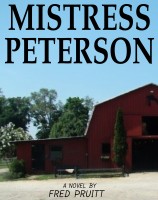 Scientists are proposing reintroducing large mammals such as elephants, lions, cheetahs and wild horses to North America to replace populations lost 13,000 years ago. Scientists are proposing reintroducing large mammals such as elephants, lions, cheetahs and wild horses to North America to replace populations lost 13,000 years ago.
| Wasn't there a reason the populations were "lost"? Like climate and environmental changes? |
The scientists say that not only could large tracts of North America act as breeding sanctuaries for species of large wild animals under threat in Africa and Asia, but that such ecological history parks could be major tourist attractions. "Africa and parts of Asia are now the only places where megafauna are relatively intact, and the loss of many of these species within this century seems likely," the team, led by Josh Donlan from New York's Cornell University, said.
| I think we should have kangaroos, too. Why should Australia have all the kangaroos? |
"Given this risk of further extinction, re-wilding of North American sites carries global conservation implications," the team wrote in Wednesday's issue of the science journal Nature. It said large mammals were common across all continents until the Late Pleistocene wipeout that hit North America hardest and handed the world to smaller species. The largest mammals in the United States today are bison. The Pleistocene epoch lasted from about 1.65 million years ago to 10,000 years ago. | Hmmm... What do the folks in Nebraska think about having rhinoceri and giant sloths reintroduced? Or do their opinions count? |
"Large carnivores and herbivores often play important roles in the maintenance of biodiversity, and thus many extinct mammals must have shaped the evolution of the species we know today," the scientists wrote. They said the pronghorn antelope's remarkable turn of speed must be due at least in part to the presence of the now extinct predatory American cheetah alongside it on North America's grasslands. Reintroducing the modern relatives of the Late Pleistocene losers to North America could spark fresh interest in conservation, contribute to biodiversity and begin to put right some of the wrongs caused by human activities.
| On the other hand, it could also wreak havoc on the existing ecological balance. We're still trying to get rid of snake head fish and killer bees and Dutch elm blight, aren't we? |
"Establishing Asian asses and Przewalski's horse in North America might help prevent the extinction of these endangered species and would restore equid species to their evolutionary homeland," the scientists wrote. They proposed a second phase that would include reintroducing African cheetahs, lions and Asian and African elephants to large private parks. "Free-roaming, managed cheetahs in the southwestern United States could save the fastest carnivore from extinction, restore what must have been strong interactions with pronghorn and facilitate ecotourism as an alternative for ranchers. | An alternative to what? Raising cattle? Living in the area? |
"Managed elephant populations could similarly benefit ranchers through grassland maintenance and ecotourism," they wrote, adding that reintroducing lions would represent the pinnacle of the Pleistocene re-wilding of North America. "Honey, have you seen little Timmy?"
"He went out to play, dear."
"Uh oh." |
| I can't wait to post the first rogue elephant story datelined The Mall of The Americas... |
They admitted the plan would be stoopid controversial but said it was a far better option than simply accepting the terminal decline of some of the world's most impressive species due to human encroachment and global warming.
I knew it "Global Warming" crops up in everything nowadays.
"Pleistocene re-wilding is an optimistic alternative," they wrote. "The obstacles are substantial and the risks are not trivial, but we can no longer accept a hands-off approach to wilderness preservation."
Sounds like an incredibly bad idea to me. These large herbivores competeing wiht humans for food and the carnivores going after farm animals. Yup, an incredibly bad idea.
| Next year we're re-introducing trilobites. |

|










 Scientists are proposing reintroducing large mammals such as elephants, lions, cheetahs and wild horses to North America to replace populations lost 13,000 years ago.
Scientists are proposing reintroducing large mammals such as elephants, lions, cheetahs and wild horses to North America to replace populations lost 13,000 years ago. 